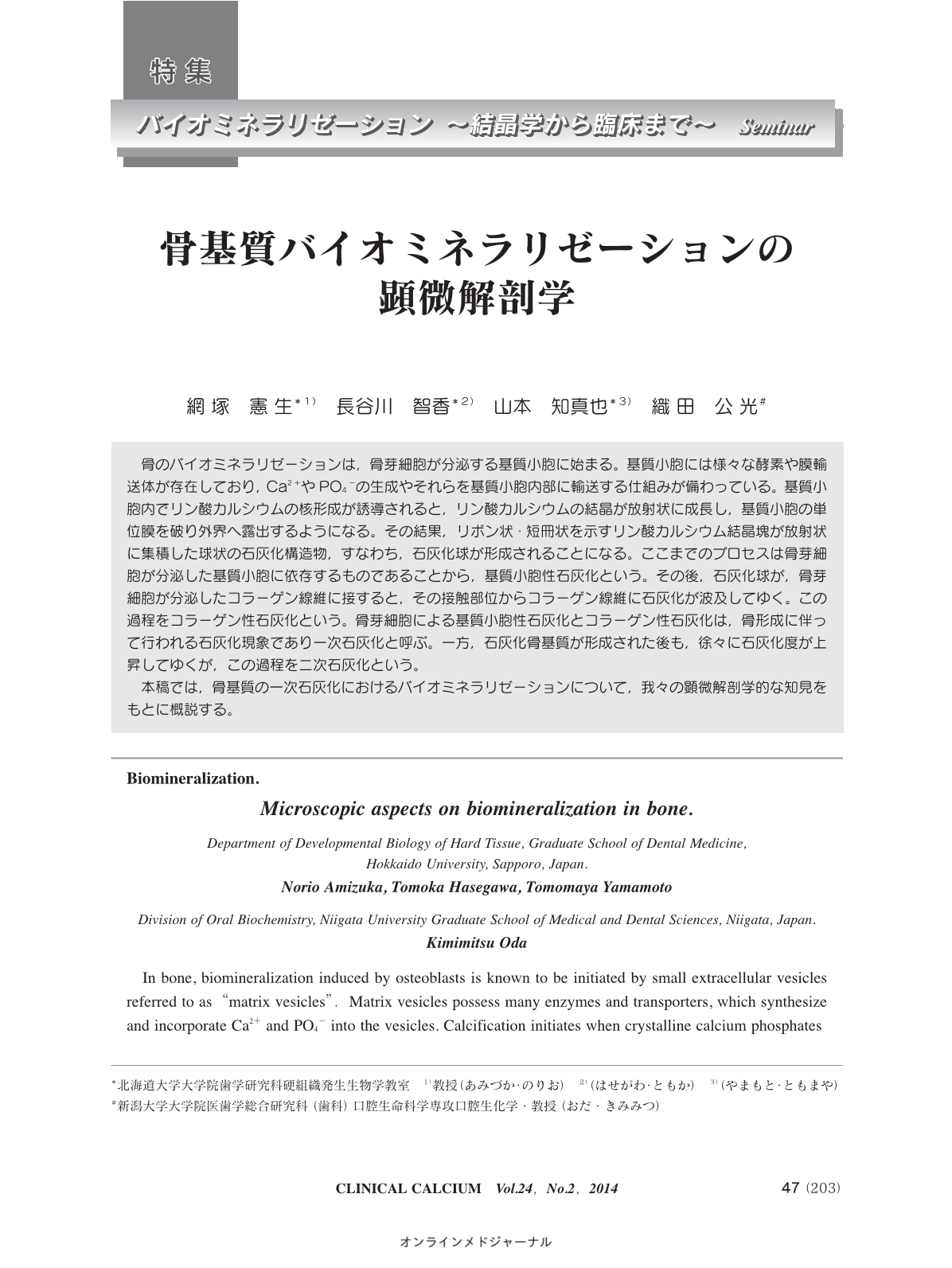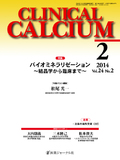Japanese
English
- 有料閲覧
- Abstract 文献概要
- 1ページ目 Look Inside
- 参考文献 Reference
骨のバイオミネラリゼーションは,骨芽細胞が分泌する基質小胞に始まる。基質小胞には様々な酵素や膜輸送体が存在しており,Ca2+やPO4-の生成やそれらを基質小胞内部に輸送する仕組みが備わっている。基質小胞内でリン酸カルシウムの核形成が誘導されると,リン酸カルシウムの結晶が放射状に成長し,基質小胞の単位膜を破り外界へ露出するようになる。その結果,リボン状・短冊状を示すリン酸カルシウム結晶塊が放射状に集積した球状の石灰化構造物,すなわち,石灰化球が形成されることになる。ここまでのプロセスは骨芽細胞が分泌した基質小胞に依存するものであることから,基質小胞性石灰化という。その後,石灰化球が,骨芽細胞が分泌したコラーゲン線維に接すると,その接触部位からコラーゲン線維に石灰化が波及してゆく。この過程をコラーゲン性石灰化という。骨芽細胞による基質小胞性石灰化とコラーゲン性石灰化は,骨形成に伴って行われる石灰化現象であり一次石灰化と呼ぶ。一方,石灰化骨基質が形成された後も,徐々に石灰化度が上昇してゆくが,この過程を二次石灰化という。 本稿では,骨基質の一次石灰化におけるバイオミネラリゼーションについて,我々の顕微解剖学的な知見をもとに概説する。
In bone, biomineralization induced by osteoblasts is known to be initiated by small extracellular vesicles referred to as “matrix vesicles”.Matrix vesicles possess many enzymes and transporters, which synthesize and incorporate Ca2+ and PO4- into the vesicles. Calcification initiates when crystalline calcium phosphates are nucleated inside these matrix vesicles, and calcium phosphates, i.e., hydroxyapatite crystals, grow and eventually break through the membrane to get out of the matrix vesicles. Exposed calcium phosphates featuring “ribbon-like” appearance assemble radially, forming spherical mineralized structure, referred to as “mineralized nodule” or “calcifying globule”.This process is called “matrix vesicle mineralization”.Thereafter, the mineralized nodules make contacts with surrounding collagen fibrils, extending mineralization along with their longitudinal axis from the contact points of collagen fibrils - collagen mineralization -. Matrix vesicle mineralization and subsequent collagen mineralization are classified as primary mineralization associated with osteoblastic bone formation. After primary mineralization, secondary mineralization takes place, gradually increasing mineral density of bone matrix. This review will introduce the microscopic findings on matrix vesicle mineralization and subsequent collagen mineralization.



